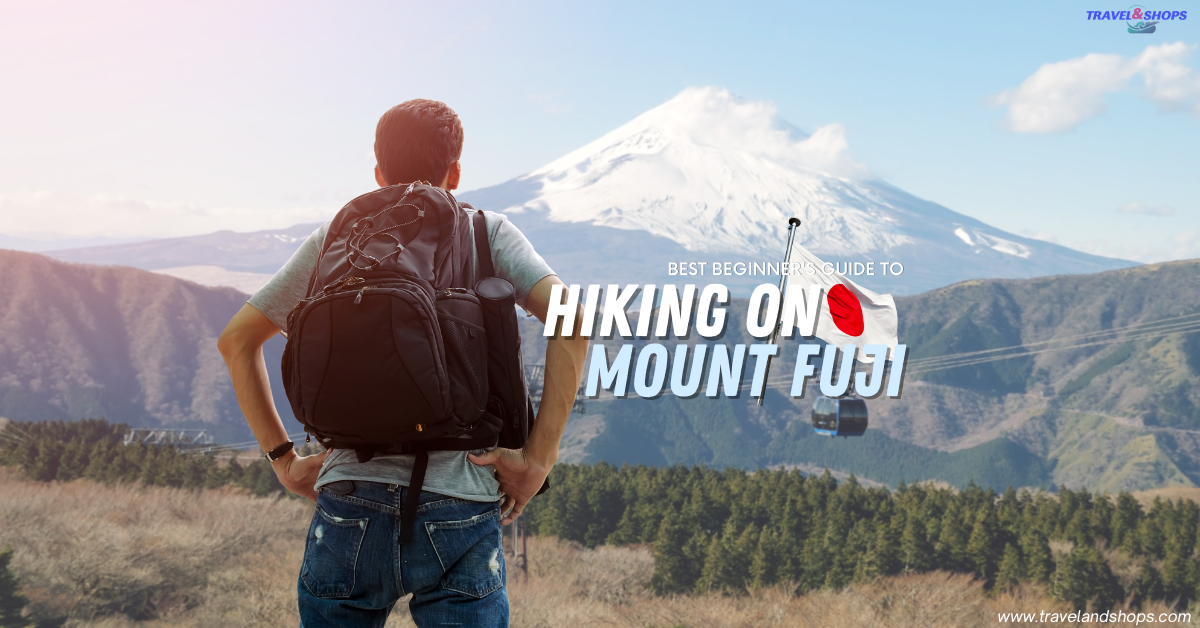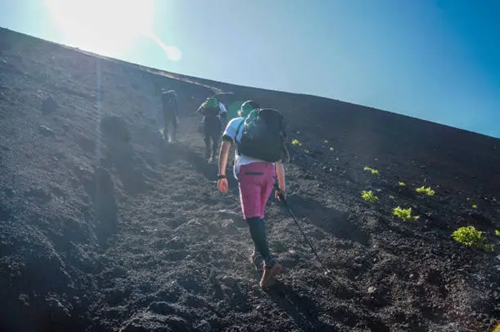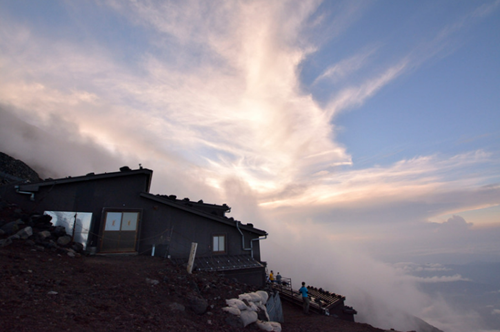A Beginner’s Guide to Hiking on Mount Fuji: Why You Should Try It, When to Go, Costs, and Preparation Tips

Hiking on Mount Fuji for beginners is a bucket list adventure that combines breathtaking views, cultural significance, and the chance to challenge yourself. For many, Mount Fuji isn’t just a mountain—it’s a symbol of Japan, gracing art, poetry, and photographs worldwide. But the thrill of climbing Fuji firsthand, even as a novice, is unlike any postcard or painting. With accessible routes, clear trails, and a community of hikers from around the globe, this towering peak welcomes beginners with open arms.
If you’ve ever thought about conquering Japan’s tallest mountain but felt intimidated, this guide is here to show you how doable—and rewarding—this journey can be. We’ll walk through why you should try hiking on Mount Fuji, the best time to go, how much it costs, and the essential items to bring along to make your hike smooth and safe. With the right preparation, you’ll find that this journey is not only achievable but also unforgettable.
Why You Should Try Hiking on Mount Fuji
Hiking on Mount Fuji isn’t just about reaching the summit of a mountain; it’s a journey filled with natural beauty, cultural richness, and a deep sense of personal accomplishment. Here’s why you should consider giving it a try:
1. A Symbol of Japanese Culture
- Historical Significance: Mount Fuji, or Fujisan as it’s called locally, isn’t just Japan’s tallest mountain—it’s a sacred symbol with a rich history dating back thousands of years. The mountain has been a place of pilgrimage since ancient times, believed to be the home of deities and the center of spiritual energy. By climbing it, you’re taking part in a tradition that countless people have undertaken for centuries.
- Cultural Impact: Fuji is celebrated in Japanese art, literature, and religion. From classic ukiyo-e paintings to modern photography, Mount Fuji captures the Japanese spirit, and climbing it gives you a chance to connect with that cultural heritage firsthand.
2. A Manageable Challenge for Beginners
- Beginner-Friendly Trails: Mount Fuji’s main trails, especially the Yoshida Trail, are well-marked and designed to be accessible to climbers of all levels. They’re equipped with frequent mountain huts for resting, making it feasible for beginners to pace themselves and acclimate.
- Community Support: The number of climbers and the shared experience mean you’ll have an encouraging community around you. It’s common to meet other hikers from all over the world who are experiencing the same first-time challenges and triumphs. This camaraderie helps ease any intimidation beginners might feel about the climb.
3. Breathtaking Sunrise at the Summit
- Goraiko Sunrise: The sunrise from the summit of Mount Fuji, known as Goraiko, is a spectacle many describe as life-changing. Watching the sun rise above the clouds and light up Japan’s landscape below is something words or photos can hardly capture. Hikers often begin their ascent at night, reaching the summit just in time for this magical moment, which alone is worth the climb.
- Unique Landscape Views: As you climb, the landscape changes drastically. The lower trails are covered in lush greenery, which gradually gives way to volcanic rock and barren terrain. At higher altitudes, you’ll be above the clouds, giving a sense of floating in the sky—a scene you won’t find anywhere else.
4. Personal Growth and Achievement
- Testing Your Limits: Climbing Mount Fuji can be a test of endurance, patience, and mental resilience. Many hikers find that the journey forces them to slow down, focus on their breathing, and push through discomfort—all valuable life lessons. Each step toward the summit is a reminder of your own strength and determination.
- Celebrating Your Achievement: Reaching the top brings a wave of accomplishment that’s hard to match. You’re not only standing on the highest point in Japan but also celebrating a personal victory. The experience of looking down from the summit and realizing what you’ve achieved can be transformative, making you feel stronger and more capable in other areas of life.
5. An Eco-Friendly, Responsible Travel Choice
- Supporting Conservation Efforts: When you choose to hike Mount Fuji, you’re contributing to Japan’s eco-tourism initiatives. Authorities work hard to maintain the trails, limit environmental impact, and preserve the beauty of Fuji for future generations. Making the voluntary ¥1,000 donation helps support these efforts, allowing you to directly contribute to conservation.
- Mindful Travel and Appreciation for Nature: Fuji’s popularity has encouraged a focus on sustainable, respectful tourism. Signs along the trails encourage hikers to “leave no trace,” reminding them to pack out waste and respect the environment. Hiking Mount Fuji as a beginner isn’t just about seeing nature; it’s about learning to protect and appreciate it more fully.
6. Accessible from Major Cities
- Proximity to Tokyo: For travelers visiting Japan, especially first-timers, Mount Fuji’s location makes it an easy addition to the itinerary. Located just a few hours from Tokyo, you can access the mountain by bus or train, and there are a range of options to suit different budgets and schedules.
- Available Guided Tours: If navigating the hike on your own feels intimidating, there are also a variety of guided tours for beginners. These tours provide everything from transportation and food to guide-led safety briefings, allowing you to focus entirely on enjoying the experience.
In short, hiking on Mount Fuji for beginners is about more than just reaching a peak. It’s a journey filled with historical connection, natural wonder, and personal accomplishment. Each step—whether on rocky paths or scenic lookouts—is a chance to connect with Japan’s rich culture, make lifelong memories, and challenge yourself in ways that are as rewarding as they are unforgettable.
When to Hike on Mount Fuji
Timing your hike on Mount Fuji is essential for both safety and enjoyment. The mountain’s weather, accessibility, and crowd levels vary dramatically depending on the season, so here’s everything you need to know to pick the right time:

Climbing Season (July to Early September)
- Official Climbing Season: The official climbing season for Mount Fuji runs from early July to early September. During this period, all four main trails (Yoshida, Subashiri, Gotemba, and Fujinomiya) are open, and mountain facilities are fully operational. The trails are monitored, mountain huts are open, and first-aid stations are staffed, making this season by far the safest time for beginner climbers.
- Stable Weather: The summer months are when Mount Fuji’s weather is most stable and temperatures are milder. Although it can still be unpredictable, conditions are generally favorable, with fewer chances of sudden snowstorms or extreme cold.
- Rescue and Support Services Available: Climbing in season means you’ll have access to services like first-aid stations, guide staff, and rescue teams stationed along the trail. This additional support is highly beneficial, especially for those new to mountain climbing.
Peak Months and Weekdays vs. Weekends
- July and August (Peak Months): July and August are the warmest months and tend to be the busiest. The popular Yoshida Trail, in particular, can get crowded, especially around the Obon holiday period in mid-August when many locals also make the pilgrimage. During these times, mountain huts often reach capacity, and trails can become congested.
- Weekdays vs. Weekends: For a less crowded experience, consider climbing on a weekday. Weekends typically attract more climbers, especially those attempting a one-day climb or planning to summit for the sunrise. By going on a weekday, you’ll have more space to pace yourself and enjoy the journey without the large crowds.
Weather and Temperatures to Expect
- Lower Elevations: Temperatures at the 5th Station (where most people begin their climb) are generally comfortable, ranging from 10°C to 20°C (50°F to 68°F) during July and August. However, humidity can still be high, so be prepared for varying conditions.
- Upper Elevations and Summit: Temperatures drop significantly as you climb higher. At the summit, temperatures can be close to freezing, even in the summer. Expect around 0°C to 5°C (32°F to 41°F) at the summit in the early morning. Layering is essential, as the wind chill can make it feel much colder.
- Sunrise Climbs (Night Hiking): Many hikers choose to start climbing in the evening to reach the summit by sunrise. If you plan to do this, keep in mind that nighttime temperatures can be very cold, even in summer, so warm clothing and headlamps are essential.
Avoiding Off-Season Hikes
- October through June: While Mount Fuji may seem appealing year-round, hiking outside of the official climbing season is not recommended for beginners. During these months, weather conditions become increasingly severe, with snow, ice, and powerful winds creating hazardous conditions. The trails are unmonitored, mountain huts are closed, and emergency services are less accessible.
- Experienced Climbers Only: Off-season climbsHiking on Mount Fuji are best left to experienced mountaineers equipped with winter gear, technical climbing skills, and knowledge of avalanche risk. Beginners should avoid attempting an off-season climb, as it requires advanced equipment and preparation.
Best Time for Clear Views
- Early Morning and Sunrise: The best visibility on Mount Fuji typically occurs in the early morning hours. Many climbers aim to reach the summit by dawn to witness Goraiko, or the first light of sunrise over Japan. Not only is the sunrise stunning, but early morning views tend to be the clearest, with fewer clouds obscuring the scenery.
- Late July to Early August: Mid-summer (especially late July to early August) is generally the clearest window for views, as the rainy season in Japan (June through early July) ends, and skies start to clear. Planning your climb around this time increases your chances of clear vistas both during the ascent and at the summit.
Watching Out for Weather Patterns
- Typhoon Season (Late August – Early September): Late August through early September is Japan’s typhoon season, which can bring heavy rains and strong winds even to Mount Fuji. Before setting out, check weather forecasts for typhoon warnings. If bad weather is predicted, consider rescheduling, as conditions can change rapidly and may be dangerous.
- Daily Forecasts: Because Mount Fuji’s weather can be highly variable, check detailed weather forecasts close to your climbing date. Websites like Japan Meteorological Agency (JMA) or specialized Mount Fuji climbing sites provide up-to-date mountain weather conditions, helping you avoid storms or high winds.
Tips for Picking the Right Time to Hike
- Plan in Advance: With Mount Fuji’s popularity, booking mountain hut accommodations in advance is essential, especially if you’re planning to do an overnight climb. This applies even more if you’re climbing during peak season or close to the Obon holiday.
- Pack for All Weather Possibilities: Even within the climbing season, Mount Fuji’s weather is unpredictable. It’s crucial to bring layers, including waterproof and wind-resistant gear, to handle temperature changes, rain, and sudden weather shifts.
- Go Early in the Season if Possible: If your schedule allows, early July is generally less crowded than August, and you’ll still enjoy the advantages of the official season’s stable weather. The early season can be ideal for beginners looking to avoid the biggest crowds while still benefiting from open facilities and operational mountain huts.
The best time to hike Mount Fuji is during the official climbing season from July to early September, with July and early August offering the most favorable weather. By planning your climb during these months, you’ll benefit from open trails, supportive services, and milder conditions, ensuring a safe and memorable experience.
How Much Does It Cost to Hike on Mount Fuji?
Hiking on Mount Fuji is an incredible experience, but it’s important to budget accordingly to ensure you’re fully prepared for the adventure. Below is a detailed breakdown of the various costs associated with the hike, from permits to gear, as well as tips to manage your expenses effectively.
1. Trail Fees
- Climbing Fee: There is an official climbing fee to access the trails during the climbing season, which is generally around ¥1,000 (approximately $7) for adults. This fee helps maintain the trails and supports conservation efforts. Children under the age of 12 often have reduced fees or may not be charged at all. The fee is collected at the trailhead and contributes to the upkeep of facilities and the environment.
- Optional Donations: While the climbing fee is mandatory, visitors are encouraged to make additional donations to support the ongoing maintenance and preservation of Mount Fuji. Many hikers feel that contributing more can enhance their sense of responsibility and connection to this iconic mountain.
2. Transportation Costs
- Getting to Mount Fuji: Transportation to Mount Fuji varies based on where you’re coming from. For those traveling from Tokyo:
- Train and Bus: You can take a train to one of the nearest stations (such as Otsuki Station) and transfer to a bus that takes you to the 5th Station, which is the starting point for most climbs. Expect to pay around ¥2,500 to ¥3,500 (approximately $17 to $25) for a one-way ticket.
- Direct Buses: Some buses run directly from Tokyo to the 5th Station, costing around ¥2,000 to ¥3,000 (approximately $14 to $21) one-way. This option can save you time and is often more convenient.
- Return Trip: Don’t forget to budget for the return trip, which typically matches the initial transportation cost. So, round-trip travel could cost between ¥5,000 to ¥7,000 (approximately $35 to $50).
3. Accommodation Costs
- Mountain Huts: If you plan to hike overnight or want to start your climb early in the morning, consider staying at a mountain hut. Prices can vary significantly:
- Dormitory-Style Accommodations: Expect to pay around ¥5,000 to ¥10,000 (approximately $35 to $70) per person per night for a dormitory-style room. These huts provide basic amenities like bedding and meals but are often very crowded.
- Private Rooms: If you prefer more privacy, some huts offer private rooms for around ¥10,000 to ¥15,000 (approximately $70 to $105) per person. However, these are limited in availability and can fill up quickly during peak season.
- Booking in Advance: It’s crucial to reserve your mountain hut in advance, especially during the peak months of July and August. Some huts can be booked through websites or in person at the trailheads.

4. Gear and Equipment Costs
- Hiking Gear: If you don’t already have the necessary hiking gear, you’ll need to budget for:
- Footwear: Good hiking boots are essential for safety and comfort. Expect to spend ¥10,000 to ¥20,000 (approximately $70 to $140) on a decent pair.
- Clothing: Layered clothing is recommended for varying temperatures. Budget around ¥5,000 to ¥15,000 (approximately $35 to $105) for proper hiking attire, including waterproof jackets and thermal layers.
- Other Equipment: You may need to invest in other items like trekking poles (¥2,000 to ¥5,000, or about $14 to $35), headlamps for night hikes (¥2,000 to ¥5,000, or about $14 to $35), and hydration systems. If you don’t have these items, consider renting them instead of buying.
5. Food and Drinks
- Meals: Whether you’re planning to eat at the mountain huts or pack your own food, you should budget for meals:
- Hut Meals: Meals at mountain huts can be relatively expensive, ranging from ¥1,000 to ¥2,500 (approximately $7 to $17) per meal. Prices can be higher for breakfast or dinner, especially if you order special dishes.
- Packed Meals: If you want to save money, consider packing your own meals, such as energy bars, rice balls (onigiri), or sandwiches. Preparing your own food can help you stick to a budget of about ¥1,000 (approximately $7) for snacks and light meals.
- Hydration: Water is crucial during your hike. It’s often available for purchase at huts for around ¥500 to ¥1,000 (approximately $3 to $7) per bottle. Alternatively, you can bring your own water in a hydration pack to save money.
6. Miscellaneous Costs
- Insurance: Consider purchasing travel insurance that covers hiking activities. This can cost anywhere from ¥2,000 to ¥10,000 (approximately $14 to $70), depending on the coverage. This is a worthwhile investment, especially for international travelers or those not covered by other insurance policies.
- Souvenirs: If you wish to take home a memento of your climb, budget a little extra for souvenirs, such as climbing stamps or local snacks. Prices can vary, but around ¥1,000 to ¥3,000 (approximately $7 to $21) should suffice.
Summary of Costs
Here’s a quick overview of estimated costs for a single climber planning to hike Mount Fuji:
| Item | Estimated Cost (JPY) | Estimated Cost (USD) |
|---|---|---|
| Trail Fee | ¥1,000 | $7 |
| Transportation (Round Trip) | ¥5,000 to ¥7,000 | $35 to $50 |
| Mountain Hut | ¥5,000 to ¥15,000 | $35 to $105 |
| Hiking Gear (If needed) | ¥10,000 to ¥20,000 | $70 to $140 |
| Food and Drinks | ¥2,000 to ¥5,000 | $14 to $35 |
| Insurance | ¥2,000 to ¥10,000 | $14 to $70 |
| Total Estimated Cost | ¥25,000 to ¥58,000 | $175 to $400 |
In summary, hiking on Mount Fuji can cost anywhere from approximately ¥25,000 to ¥58,000 (about $175 to $400), depending on your choices and preferences. While this may seem like a significant amount, the experience of climbing Japan’s most iconic mountain is priceless. With careful planning and budgeting, you can make the most of your adventure without breaking the bank!
Things You Need to Prepare Before Hiking on Mount Fuji
Preparing for a hike on Mount Fuji is crucial to ensure a safe, enjoyable, and memorable experience. From gear to physical conditioning, here are the essential preparations you should make before hitting the trails.
1. Physical Conditioning
- Get Fit: While hiking Mount Fuji is achievable for many, being in good physical condition will enhance your experience. Begin training several weeks or even months before your hike. Consider incorporating the following into your routine:
- Cardio: Engage in aerobic exercises such as running, cycling, or swimming to build endurance. Aim for at least 30 minutes of cardio workouts several times a week.
- Strength Training: Focus on building leg strength with exercises like squats, lunges, and step-ups. Strong legs will help you tackle the uphill sections more easily.
- Hiking Practice: If possible, practice hiking on local trails to simulate the conditions of Mount Fuji. Gradually increase your hiking distance and elevation to prepare your body for the climb.
2. Proper Gear and Equipment
- Footwear: Invest in high-quality hiking boots with good ankle support and a sturdy sole. Ensure they are well-fitted and broken in to prevent blisters. Consider waterproof options for unexpected rain.
- Clothing: Layering is key, as temperatures can vary significantly from the base to the summit. Here’s what to pack:
- Base Layer: Choose moisture-wicking fabrics to keep sweat away from your skin.
- Insulating Layer: A fleece or lightweight down jacket will help retain body heat.
- Outer Layer: A waterproof and windproof jacket is essential to protect against rain and wind.
- Accessories: Don’t forget to pack:
- Hiking poles: These can provide stability and reduce strain on your knees, especially during the descent.
- Hat and Gloves: Even in summer, temperatures can drop significantly at higher elevations, so pack a warm hat and gloves.
3. Hydration and Nutrition
- Water Supply: Staying hydrated is crucial during your hike. Bring at least 2 to 3 liters of water, especially for longer climbs. A hydration pack or water bottles are both good options.
- Snacks and Meals: Pack high-energy snacks such as trail mix, energy bars, or jerky. If you’re planning an overnight stay, consider easy-to-carry meals like instant noodles or rice balls (onigiri) that you can prepare at the mountain huts.
4. Safety Gear
- Headlamp: If you plan to hike overnight or start before dawn, a reliable headlamp with fresh batteries is essential for visibility. This is especially important for navigating rocky sections or during dark hours.
- First-Aid Kit: Carry a small first-aid kit with essentials like adhesive bandages, antiseptic wipes, pain relievers, and any personal medications. It’s also wise to include blister treatment supplies, as these can be a common issue for hikers.
5. Navigation Tools
- Map and Compass: Familiarize yourself with the routes and have a physical map on hand, as cell service can be spotty in the mountains. A compass can help you navigate if you get lost.
- GPS Device or Smartphone App: While a physical map is important, using a GPS device or hiking app can provide real-time location tracking and trail information.
6. Weather and Conditions Check
- Weather Forecast: Before your hike, check the weather forecast for Mount Fuji. Conditions can change rapidly, and being informed helps you dress appropriately and decide whether to proceed with your plans.
- Emergency Plan: Have a plan in case of emergencies. Familiarize yourself with the locations of mountain huts, first-aid stations, and emergency contact numbers. Share your hiking itinerary with a friend or family member who isn’t going with you.
7. Essential Documents
- Identification: Carry a form of identification, such as a passport or driver’s license, in case of emergencies or when registering for mountain huts.
- Cash: While many facilities may accept cards, it’s wise to have cash on hand for small purchases like food, drinks, or climbing fees, especially at mountain huts.
8. Booking Accommodations
- Mountain Hut Reservations: If you plan to stay overnight, make reservations for mountain huts well in advance, particularly during the peak season. Research different huts along your chosen trail and their amenities to find one that suits your needs.
- Timing for Stays: If you intend to watch the sunrise from the summit, consider booking a hut that allows for an early start. Many climbers aim to reach the summit before dawn, so timing your stay accordingly is crucial.
9. Mental Preparation
- Research the Climb: Familiarize yourself with the trail, including its difficulty, elevation gain, and potential hazards. Understanding what to expect will help alleviate anxiety and boost your confidence.
- Set Realistic Goals: Prepare mentally by setting realistic goals for your hike. If you are a beginner, aim to enjoy the journey rather than push for speed. Take breaks, enjoy the scenery, and remember that reaching the summit is a significant achievement in itself.
The Climb: What to Expect
Hiking on Mount Fuji is a remarkable experience that combines stunning views, unique terrain, and a sense of achievement as you ascend Japan’s iconic peak. Whether you’re a beginner or a more experienced hiker, understanding what to expect during the climb will help you prepare for the adventure. Here’s a detailed look at the climbing experience, including trail conditions, what you’ll see, and tips for making your hike enjoyable.
1. Trail Overview and Terrain
Mount Fuji has four main trails that lead to the summit: Yoshida Trail, Subashiri Trail, Gotemba Trail, and Fujinomiya Trail. Each trail has unique characteristics, but they all share certain features:
- Trail Difficulty: While hiking Mount Fuji is generally considered a moderate climb, the terrain can vary greatly. Expect steep sections, rocky paths, and uneven ground, especially as you approach the summit. The trails are well-marked, but some areas may require careful footing.
- Elevation Gain: The elevation from the 5th Station (the most common starting point) to the summit is approximately 1,500 meters (about 4,920 feet). The ascent can be challenging due to the altitude, so it’s essential to pace yourself and take breaks as needed.
2. The Ascent
- Initial Sections (5th to 7th Station): The climb typically begins at the 5th Station, which is accessible by bus from nearby cities. The initial sections are often more gradual, allowing hikers to get accustomed to the elevation and rhythm of the hike. As you ascend, you’ll notice the lush greenery transitioning into volcanic rock and gravel.
- Mid-Climb (7th to 9th Station): As you continue, the terrain becomes steeper and rockier. This section requires more effort, as the altitude can start to affect your breathing. Many hikers find that taking smaller, more deliberate steps helps conserve energy. Keep an eye out for stunning vistas of the surrounding landscape as you climb higher.
- Final Stretch (9th Station to Summit): The final push to the summit is the most challenging. The terrain consists of loose rocks and steep inclines, making it vital to maintain focus and balance. This section can be taxing, especially with thinning air at higher elevations, so take your time and rest as needed.
3. Scenic Views and Landmarks
- Panoramic Vistas: As you ascend Mount Fuji, you’ll be treated to breathtaking views of the surrounding mountains, forests, and lakes. On clear days, the sight of Lake Kawaguchi and the city of Fujiyoshida can be particularly stunning. Remember to stop and take photos to capture these memories.
- Goraiko (First Light): Many climbers set out to reach the summit before dawn to witness Goraiko, the first light of sunrise. The sunrise from the summit is often described as a spiritual experience, with vibrant colors illuminating the horizon. Be prepared for a chill in the air as you wait for the sun to rise.
- Shrines and Markers: Along the trails, you’ll encounter various shrines, resting areas, and landmarks that reflect the cultural significance of Mount Fuji. These stops provide excellent opportunities to rest, reflect, and take in the surroundings.
4. Weather Conditions
- Unpredictable Weather: Weather conditions on Mount Fuji can change rapidly. Even during the climbing season, you might experience rain, strong winds, or sudden temperature drops, especially at higher elevations. Be prepared by checking the forecast regularly and bringing waterproof and wind-resistant gear.
- Temperature Variations: Expect significant temperature drops as you ascend. At the 5th Station, temperatures can range from 10°C to 20°C (50°F to 68°F), while at the summit, it can drop to around 0°C to 5°C (32°F to 41°F) or even lower. Dressing in layers will help you manage these fluctuations effectively.
5. Dealing with Altitude and Fatigue
- Acclimatization: The higher you climb, the thinner the air becomes, which can lead to altitude sickness for some hikers. To minimize the risk, ascend slowly and allow your body to acclimatize. Symptoms may include headaches, dizziness, or nausea. If you experience severe symptoms, descend immediately.
- Take Breaks: It’s important to listen to your body. Take regular breaks to hydrate, snack, and rest. Many climbers find that a slower pace not only helps manage fatigue but also allows them to enjoy the scenery more fully.
6. Facilities and Amenities
- Mountain Huts: Along the trails, you’ll find mountain huts that offer food, water, and rest areas. Some huts also provide sleeping accommodations for those hiking overnight. Be aware that these huts can get crowded, so plan your stops accordingly.
- First-Aid Stations: First-aid stations are available along the trails during the climbing season. They provide assistance for minor injuries or ailments and can be invaluable for those feeling unwell. Don’t hesitate to seek help if you need it.
7. Tips for a Successful Climb
- Start Early: If you’re aiming for a sunrise summit, plan to start your hike in the early evening. This will allow you to reach the top in time to enjoy the view. Many climbers aim to leave the 5th Station by 8 PM to 10 PM for this purpose.
- Stay Hydrated: Carry sufficient water, especially as you climb higher. Dehydration can lead to fatigue and decreased performance, so drink regularly, even if you don’t feel thirsty.
- Respect the Environment: Follow the principles of “Leave No Trace.” Carry out any trash, stay on marked trails, and be mindful of the natural surroundings. Preserving Mount Fuji’s beauty is important for future generations to enjoy.
Tips for a Smooth and Safe Climb
Climbing Mount Fuji is an exhilarating experience, but preparation and awareness are crucial for a safe and enjoyable journey. Here are some essential tips to help you navigate your climb smoothly while minimizing risks:
1. Plan Your Route
- Choose the Right Trail: Familiarize yourself with the four main trails: Yoshida, Subashiri, Gotemba, and Fujinomiya. Each trail has different lengths, difficulty levels, and features. The Yoshida Trail is the most popular and beginner-friendly, while Gotemba is longer and less crowded but steeper.
- Know Your Climb Duration: Research the expected duration for your chosen trail. Most hikers take 5 to 7 hours to reach the summit and 3 to 5 hours to descend. Plan your timing accordingly, especially if you’re aiming for a sunrise summit.
2. Arrive Early
- Beat the Crowds: Arriving early at the 5th Station helps you avoid the busiest times, especially on weekends and holidays. Fewer people on the trail allows for a more enjoyable experience and easier movement.
- Start Your Hike Early: If you’re planning an overnight climb for a sunrise view, aim to leave the 5th Station in the late evening. Starting early gives you ample time to reach the summit and enjoy the sunrise without feeling rushed.
3. Dress in Layers
- Adapt to Changing Conditions: Layering your clothing helps you manage temperature fluctuations as you ascend. Start with a moisture-wicking base layer, add an insulating layer, and top it with a waterproof outer layer.
- Bring Extra Clothes: Pack a light extra layer, such as a fleece or thermal shirt, for warmth at the summit, and include a beanie and gloves to protect against cold winds.
4. Hydration and Nutrition
- Stay Hydrated: Drink water regularly throughout your climb. Aim for about 0.5 liters (17 ounces) of water per hour, especially at higher elevations where dehydration can occur quickly.
- Pack Nutritious Snacks: Bring high-energy snacks such as nuts, energy bars, or dried fruit. These will help sustain your energy levels during the climb and provide quick boosts when you feel fatigued.
5. Pace Yourself
- Listen to Your Body: Take breaks as needed, especially if you feel tired or experience symptoms of altitude sickness. Resting not only helps you recover but also allows you to take in the breathtaking views.
- Set a Comfortable Pace: Instead of rushing, maintain a steady pace that feels comfortable for you. A slower pace helps conserve energy and makes the climb more enjoyable.
6. Use Proper Hiking Techniques
- Foot Placement: Focus on placing your feet carefully, especially on rocky or uneven terrain. Using hiking poles can provide additional stability and reduce strain on your knees.
- Take Small Steps: In steep sections, take smaller steps to maintain balance and reduce the risk of slipping. This technique is particularly helpful on loose gravel.
7. Be Prepared for Weather Changes
- Check the Forecast: Before your hike, check the weather forecast for Mount Fuji and keep an eye on it as conditions can change rapidly. Be aware of potential storms, especially during the afternoon.
- Be Ready to Turn Back: If weather conditions deteriorate or if you or your hiking companions are feeling unwell, don’t hesitate to turn back. Safety should always be your priority.
8. Familiarize Yourself with Emergency Procedures
- Know Emergency Contacts: Keep emergency contact numbers on hand, including local rescue services. Familiarize yourself with the locations of first-aid stations and mountain huts along your route.
- Have a Plan: Discuss an emergency plan with your group before starting the climb. Agree on a meeting point in case anyone gets separated or needs to return early.
9. Follow Trail Etiquette
- Respect Other Hikers: Keep to the designated trail and yield to those coming downhill. Maintain a courteous demeanor, and if you stop to rest, move to the side of the trail to allow others to pass.
- Pack Out Your Trash: Follow the Leave No Trace principles by taking all your trash with you. This helps preserve the mountain’s beauty and keeps it clean for future hikers.
10. Capture the Moments
- Bring a Camera or Smartphone: Don’t forget to capture the stunning landscapes and memories along the way. However, be mindful of your surroundings and avoid obstructing the trail while taking photos.
- Consider a Travel Journal: If you enjoy writing, consider keeping a travel journal during your climb. Jotting down your thoughts, experiences, and reflections can enhance your adventure and serve as a cherished keepsake.
A journey to the top of Japan’s most iconic peak
By following these tips, you can help ensure a smooth and safe climb on Mount Fuji. Preparation, awareness, and respect for the environment and other hikers will contribute to a fulfilling experience. Whether you’re aiming for the summit or simply enjoying the journey, these guidelines will help you make the most of your adventure on Japan’s iconic peak.
Hiking on Mount Fuji for beginners is an adventure worth every step. With its stunning landscapes, cultural significance, and accessible trails, Mount Fuji offers beginners a memorable journey to the top of Japan’s most iconic peak. The experience will reward you with personal accomplishment, breathtaking views, and perhaps a few new hiking friends along the way. Each part of the climb—from the rocky terrain to the spectacular sunrise—is a reminder of why Mount Fuji is such a revered mountain.
As you prepare, keep in mind that the key to a successful climb lies in careful preparation, understanding the unique challenges of high-altitude hiking, and staying positive throughout the journey. Armed with the right information, you’re ready to embrace this unforgettable adventure. For more tips and insights on climbing Mount Fuji, check reliable resources like Japan’s official tourism site for the latest details on trail conditions and safety measures Japan Travel.





